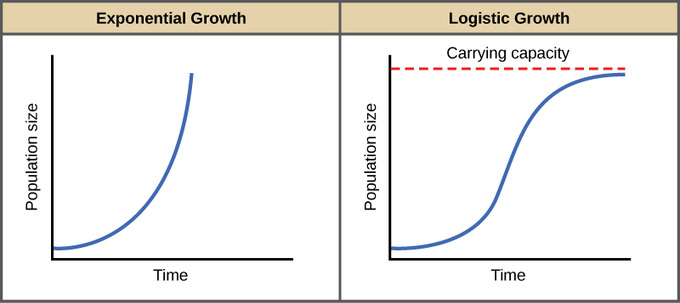Definition Of Logistic Growth Model
It is known as the logistic model of population growth and it is.
Definition of logistic growth model. Using data from the first five u s. Logistic growth is characterized by increasing growth in the beginning period but a decreasing growth at a later stage as you get closer to a maximum. The resulting model is called the logistic growth model or the verhulst model. Logistic growth is population increase that happens in a manner that starts slowly as there are few individuals then increases in speed as numbers increase but then decreases to a halt as numbers get high enough that resources are depleted and cannot support further growth.
Censuses he made a. If reproduction takes place more or less continuously then this growth rate is represented by. The logistic model for population growth i have a problem in my high school calculus class. The word logistic has no particular meaning in this context except that it is commonly accepted.
Verhulst a belgian mathematician who studied this idea in the 19th century. Logistic growth is used to measure changes in a population much in the same way as exponential functions. As population size increases and resources become more limited intra specific competition occurs. To model the reality of limited resources population ecologists developed the logistic growth model.
1 p dp dt b kp where b equals the birth rate and k equals the death rate. Also there is an initial condition that p 0 p 0. Logistic growth model part 1. The model has a characteristic s shape but can best be understood by a comparison to the more familiar exponential growth model.
Logistic growth is a mathe m atical function that can be used in several situations. Logistic growth is represented in graph form as an s shaped curve s curve. The logistic growth model is approximately exponential at first but it has a reduced rate of growth as the output approaches the model s upper bound called the carrying capacity. A biological population with plenty of food space to grow and no threat from predators tends to grow at a rate that is proportional to the population that is in each unit of time a certain percentage of the individuals produce new individuals.

